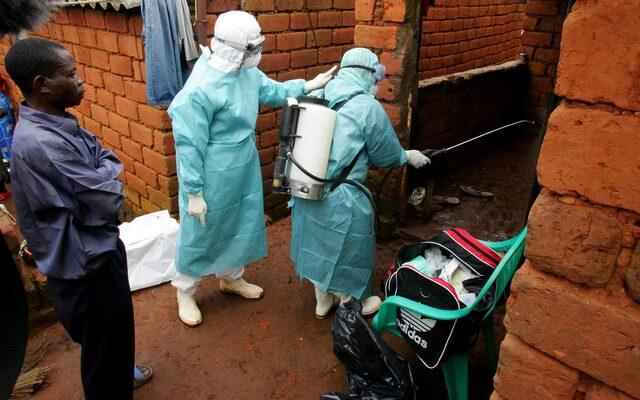Marburg fever was detected in 2 people who died in the Ashanti region of Ghana at the beginning of July. However, a sample was sent to a laboratory in Senegal to confirm the epidemic, and the results were positive. This development worried the world, which has been fighting the coronavirus for more than 2 years. WHO declared the first outbreak of Ebola-like Marburg virus disease in Ghana after laboratories confirmed infections in two cases announced earlier this month. prof. Dr. Ayşegül Ulu Kılıç gave information about the signs (symptoms) of Marburg virus and asked, “How is Marburg virus transmitted?” and “How can the Marburg virus be treated?” Answered some frequently asked questions such as:
THAT’S HOW MARBURG DOES IT! CAUSES LIFE RISK
prof. Dr. Ayşegül Ulu Kılıç stated that the Marburg virus, which has recently emerged in Ghana, has caused concern, and said that the Marburg virus, which is defined as an epidemic by the World Health Organization, manifests itself with high fever, intense headache and muscle pain and causes life-threatening risks.
WHAT IS THE MARBURG VIRUS?
Stating that the virus causes shock and severe blood loss in the last stage of the disease caused by the virus, Ayşegül Ulu Kılıç said, “Marburg virus, which is from the same family as the virus of the disease that causes Ebola, is a very dangerous type of virus with a mortality rate of up to 88 percent. It is an important health problem in West Africa for years. Marburg virus is highly contagious and starts with a high fever. In the final stage, the disease causes severe blood loss and shock. It was named so because the disease first appeared in Marburg, West Germany, in August 1967. This disease, which was seen in 30 people in the cities of Marburg and Frankfurt, continued its course after 2 people got sick in Belgrade. In laboratory studies, it was determined that the virus that caused this epidemic, which started simultaneously in two different places, was caused by African green monkeys brought to the European continent from Uganda in East Africa. Later, this virus was detected in a large number of people who traveled to the Democratic Republic of Congo, Kenya, South Africa, Zimbabwe and Angola. The virus was also seen in travelers investigating African fruit bats in Uganda in 2008. The virus, which has recently emerged in Ghana, has caused loss of life and has caused a new panic in the world.
MARBURG VIRUS SYMPTOMS
prof. Dr. Ayşegül Ulu Kılıç said that clouding of consciousness is an important symptom in the disease and said, “The disease caused by the Marburg virus begins suddenly with high fever, severe headache and weakness, and muscle pain accompanies this picture. On the third day of the illness, severe diarrhea, abdominal pain, nausea and vomiting are usually observed. Diarrhea continues to worsen, fluid loss and many metabolic disorders may occur. Skin rashes were observed in patients 2-7 days after the onset of symptoms. In fatal cases, bleeding in more than one part of the body (gingival, vaginal, intestinal) may accompany. Confusion and confusion due to involvement in the central nervous system is an important symptom. It is reported that vital losses usually occur after 8-9 days.
HOW IS THE MARBURG VIRUS TRANSMITTED?
Stating that the virus infects surfaces and objects, Ayşegül Ulu Kılıç said, “It is known that this virus is transmitted directly from person to person or that the blood, secretions and other body fluids of the infected people are transmitted to surfaces and objects. In other words, the virus is transmitted by contact with contaminated surfaces and objects. The disease caused by the Marburg virus must be differentiated from malaria, typhoid fever, shigellosis, meningitis and other viral hemorrhagic febrile diseases. Laboratory tests can also be applied to determine the presence of this virus. These tests are in the form of antibody enzyme-linked immunosorbent assay (ELISA), antigen detection tests, serum neutralization tests, reverse transcriptase polymerase chain reaction (RT-PCR).
HOW CAN THE MARBURG VIRUS BE TREATED?
prof. Dr. Ayşegül Ulu Kılıç said that regular exercise and quality sleep are very important to prevent disease and continued her words as follows:
“There is no established treatment protocol for Marburg virus. There is no proven treatment method that will alleviate the course of the disease yet. There is no vaccine for Marburg. However, some medications are given with immunosuppressive treatments during the disease. In order to protect from infectious diseases, personal hygiene, environmental cleanliness, social distance should be paid attention to. In addition, healthy nutrition, regular exercise and avoidance of inactivity, quality sleep and stress management issues come to the fore to strengthen the immune system. Information about epidemics should be followed only from the right sources, and should not be acted upon by hearsay.” (UAV)
